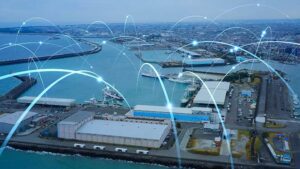
With the global pandemic, freight forwarders have been pushed to embrace automated technology and now are on the verge of growing in the industry using digitized services.
Traditional methods that are used to analyze data are not capable of keeping up with today’s market fluctuations. Operational activities were mainly dependent on manual processes such as sharing paper based documents, calls and meetings.
Digitization of the supply chain refers to the adoption of digital technologies by a company to enhance internal operations as well as communications with clients and suppliers.
Companies can perform better with insightful assessments with the help of real time analytics. With digitization, businesses can proactively take decisions based on analytics efficiently.
Benefits of Digitised Supply Chain for businesses
Most businesses have shifted to digitizing so they can stand ahead of their competitors and also meet customer demands. The usage of technologies has made the transportation and freight forwarders industry more efficient.

Through digitization, businesses can speed up logistic operations, meet customer demands, and challenges in the supply chain industry. Let’s look into 3 ways how digitizing the supply chain is helpful for businesses.
1. Improved Communication and Visibility
One great advantage of digitizing the supply chain is to provide the exact whereabouts of a shipment in real-time. This will smoothen the communication flow with your relevant stakeholders.
2. Increased Efficiency
With the help of digitization, the documentation and counting process of goods was minimized using auto scanners and sensors. By automating many manual tasks and integrating data throughout the organization, related processes can be done more efficiently.
Delivery lead times can be drastically shortened, and inventory management can be streamlined, by integrating data across the whole supply chain in real time and frequently without human interaction.
3. Less Error in Operations
In the early years before digitization came into being, there were many errors that were made by humans frequently. Due to this, the stakeholders had to pay anchorage fees and extra penalties for delays. But after digitization, with the help of an ERP system, predictive analysis is available to prevent risks, and also get solutions as to how to run an efficient operation without errors.
Digitized Supply Chain is the future of logistics
Smart robots in warehouses
With the outbreak of Covid-19 resulting in labor shortages, the logistics industries had to make a decision to function in their warehouses. Due to this most companies started using robots in warehouses, these robots were able to function more efficiently than humans. By 2026%,75% of large enterprises will have adopted some form of intralogistics smart robots in their warehouse operations.
Use of Data Analytics and Artificial Intelligence (AI)
The main objective of using AI in supply chain is to increase productivity and efficiency. Artificial Intelligence (AI) is assisting to deliver powerful optimization for improved productivity, high quality, lower costs, and great outputs while promoting safer working conditions.
Data Analytics has the ability to make data-driven decisions based on an overview of reliable data in the operations department.
Companies can convert data into useful reports, dashboards, and visualizations to get better results.
Cloud-Based GPS
With Cloud technology, there’s no need to use physical hardware to store data. This can reduce the future costs of implementing and maintaining machines. Regardless of new and well-reputed freight forwarding companies, this Cloud-based GPS makes it easy to store and retrieve data. This will also allow to provide real time visibility to the necessary stakeholders.
BlockChain
New technologies are coming up with more opportunities for digitization of the supply chain. Companies have started using blockchain as it assists in improving supply chain transparency and traceability. Blockchains help logistics businesses record prices, quality, quantity, certifications, and other necessary information so that businesses can manage supply chains effectively.
All the data is entered in the form of a ledger among the computers in a given network and everyone in the network has access to the blockchain ledger of transactions. Due to this, there is high transparency and unknown users won’t be able to hack the system too.
Conclusion
A digitized supply Chain provides businesses real time shipment visibility, analytics to make proactive decisions along with improved productivity and efficiency.In the scope of the future, it may look like the digitized supply chain would be fully automated. Putting in both human workforce and automated technology, businesses can achieve great success in the future.
HTL also is constantly adapting new digital trends to ensure that we give our customers the best service.



